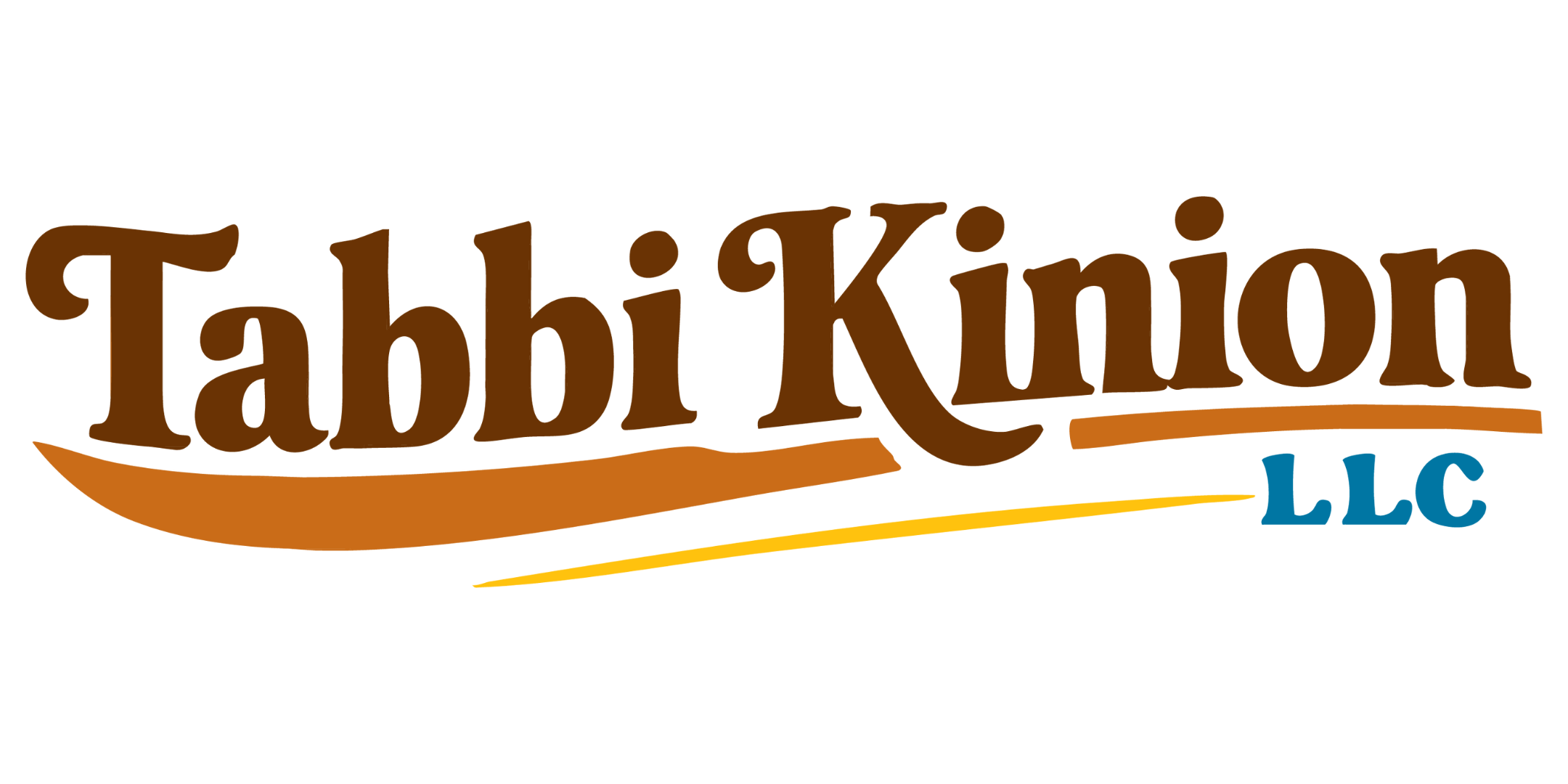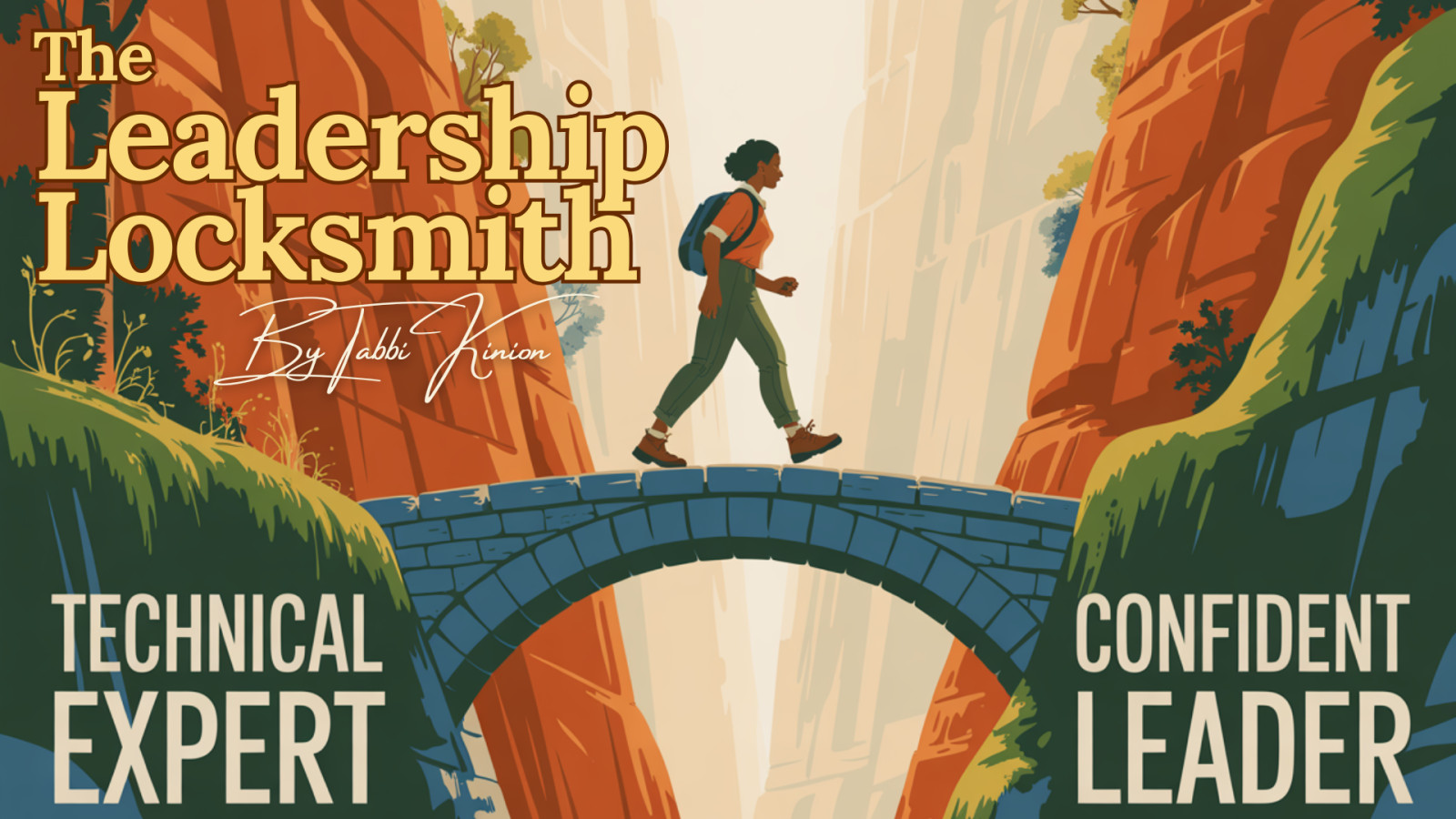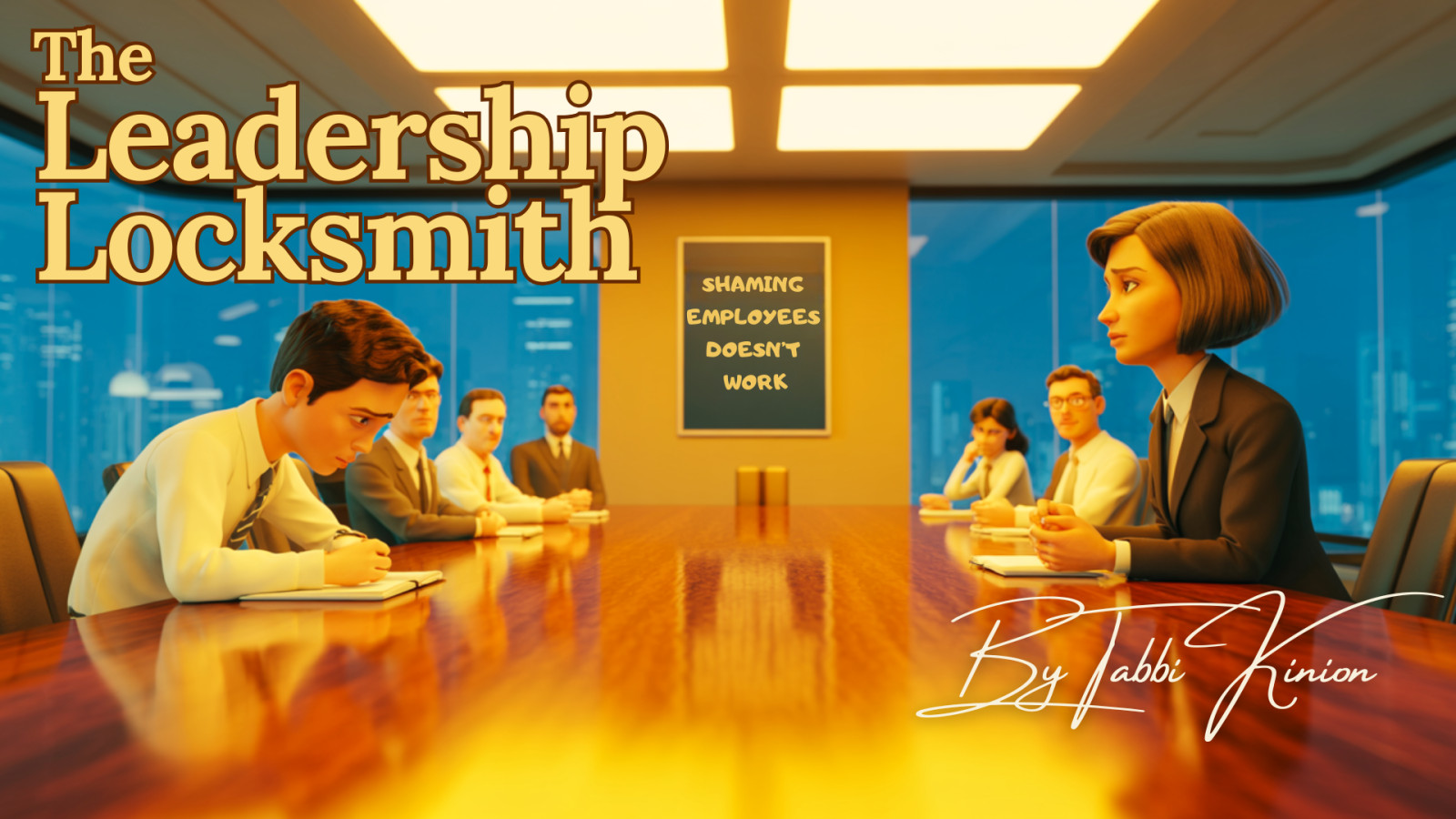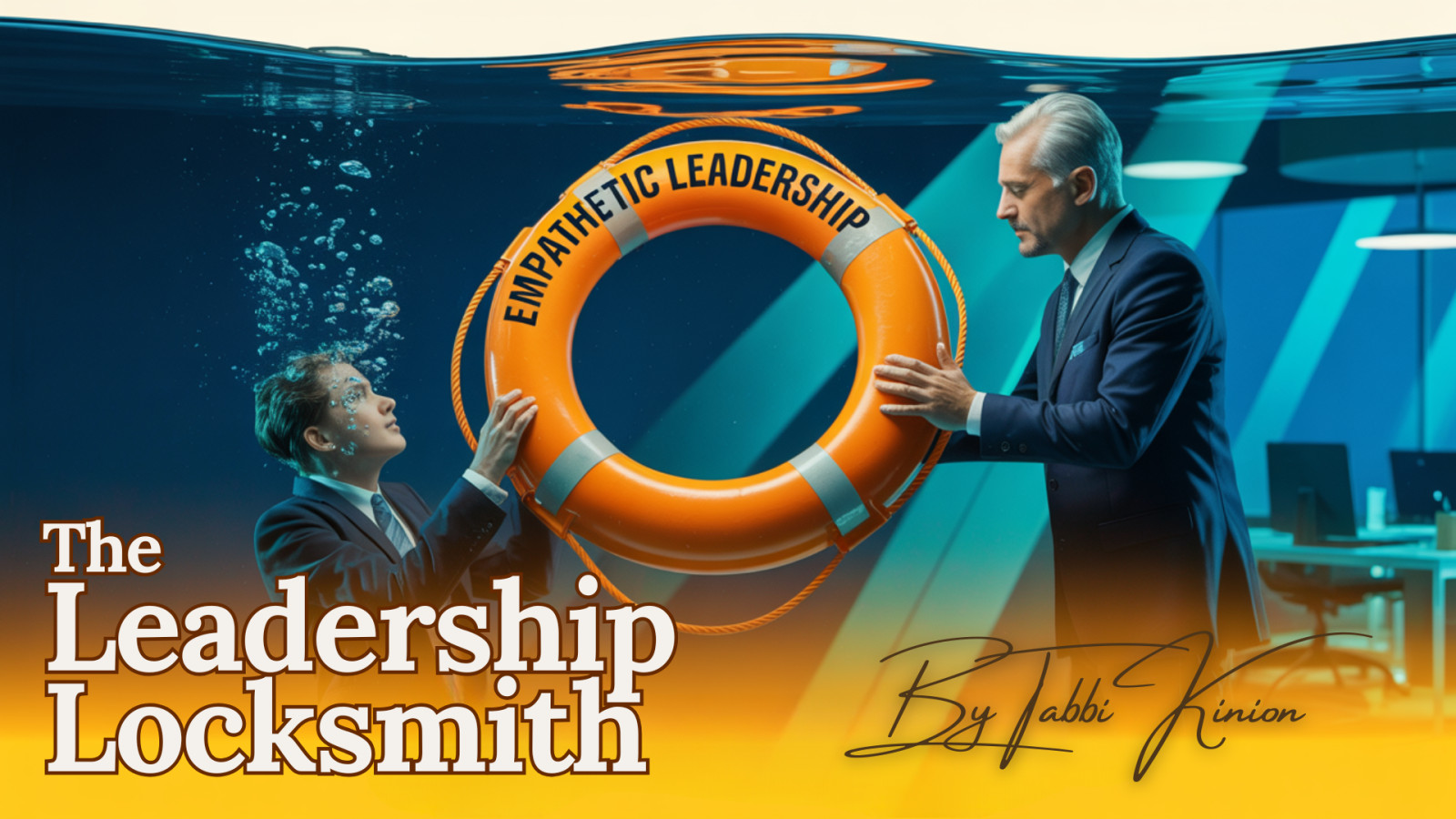
You know that moment when everything seems to be falling apart, and you're supposed to be the calm one? The steady one? The one with all the answers?
Yeah, that moment. Let's talk about that – and, more importantly, how to get through it together.
Last week, I coached a leader facing one of those impossibly tough moments. Because she had support in her corner, she didn't have to figure it out alone. Together, we crafted a strategy that turned potential chaos into a leadership win. You see, her team's grant funding may be on the chopping block, and anxiety was rippling through the office like a tidal wave. Instead of hiding in her office (tempting, right?), she reached out for support and then gathered her team for honest conversations about adapting their mission. No sugar coating, just authentic leadership in action.
This reminds me of Nelson Mandela's extraordinary example of resilience. He emerged without bitterness after 27 years in prison and transformed a nation. "A good head and a good heart are always a formidable combination," he said. While we may not face challenges of that magnitude, we can learn from his ability to combine strategic thinking with unwavering compassion to bounce back stronger.
It's those everyday moments when resilience matters most:
- Having that difficult conversation that you've been dreading
- Standing your ground against strong opposition
- Staying true to your values under pressure
- Leading your team through uncertainty
- Making tough decisions while staying human
But here's the thing - great leaders don't do it alone. They build support networks, seek guidance when needed, and know when to reach out for help.
🔑 This Week's Leadership Code Word: BOUNCE
Because the ability to bounce back isn't just about surviving – it's about thriving with support. And the most unshakeable leaders? They tap into proven techniques that transform how they handle challenges.
Let me share a few of my favorite tools from my Leadership Locksmith System coaching and training program. These are only a few of the game-changers I've seen work magic with leaders just like you:
🔄 Your Bounce-Back Blueprint:
A. Start Your Day with a "Mission Moment"
Why: When the daily grind threatens to overwhelm you, connecting with your purpose reignites your passion.
How: Before opening your email, spend 2 minutes reflecting on 1-2 ways your work impacts real people. Maybe it's the family who can safely drink their tap water or the small business owner who got their funding.
B. Create Your "Victory File"
Why: Our brains are wired to focus on negative feedback. This counterbalances that tendency.
How: Start a shared folder with your team. Exchange wins, testimonials, and success stories. On tough days, you'll have a whole cheerleading squad in your corner.
Pro tip: In our coaching program, we call this your 'Leadership Legacy File' - it's incredible how this simple tool can transform your confidence.
C. Master the "Bounce Strategy"
Why: Every setback is a setup for a comeback, but only if you have a game plan.
How: Work through the B.O.U.N.C.E method with your coach or trusted advisor:
Breathe and step back
Observe the situation objectively
Understand what's in your control
Name your available resources
Create an action plan
Execute with confidence
D. Practice the "10-10-10 Rule"
Why: This tool helps you gain perspective when everything feels urgent.
How: When facing a challenge, ask yourself: Will this matter in 10 minutes? 10 months? 10 years? This mental framework helps you respond strategically rather than reactively. When you're not sure - check in with a circle of trusted peers to help you work through the answers.
E. Build Your "Circle of Trust"
Why: Leadership can be lonely, and perspective is priceless.
How: Join a peer affinity group or a leadership coaching program. Connect with 2-3 trusted peers who will tell you what you need to hear, not just what you want to hear. Meet regularly to share challenges, workshop solutions, and celebrate wins.
Here's what I see time and again: These tools are powerful on their own, but the real transformation happens when leaders combine them with personalized coaching support. Think of it like having a personal trainer for your leadership muscles - someone who knows exactly when to push, when to adjust, and how to help you achieve results faster than you could alone.
Remember: Your calm presence during storms isn't just leadership – it's a gift to everyone around you.
But you don't have to weather those storms alone.
Please share this article with a fellow leader who might need it today. Sometimes, the strongest thing we can do is remind each other that we're not alone in this journey.
Here's the truth: The world needs resilient leaders now more than ever. And with the right support? You've got this.

I'll never forget that March morning in 2020. My phone buzzed with an urgent message - I'd been tapped for our agency's COVID response team. My heart raced as I walked into my team meeting, knowing they'd look to me for answers I didn't have. But you know what? We got through it. Together. And you will, too.
Dear government leader, I see you. The weight of proposed federal changes, contract reviews, and grant uncertainties is heavy. Your people are looking to you, just like mine looked to me. And even though you might be processing your own worries, you're showing up every day with strength and grace.
This week's Leadership Code Word is HARBOR...
... because that's precisely what you are for your team right now.
Just as a harbor provides safety during storms, your steady presence is precisely what your team needs.
Here's how to be their harbor (while taking care of yourself too):
🌊 Listen with Your Heart
- Create space for concerns (including your own)
- Share "I hear you" moments
- Remember: you don't need all the answers to be supportive
🌊 Focus on Your Circle of Control
- Guide your team to focus on what they CAN influence
- Keep daily work moving forward - it provides stability
- Maintain team routines where possible - they're comforting anchors
- Remember: energy spent on things we can't control is energy wasted
🌊 Capture Your Team's Greatness
- Help each person articulate their unique superpowers
- Document team wins and project successes
- Celebrate the skills they've developed
- Remember: their talents and accomplishments don't disappear with organizational changes
🌊 Build Your Village
- Create lasting connections (team chats, social media groups)
- Encourage peer support networks
- Stay connected - community matters now more than ever
🌊 Lead with Grace
- Be present and visible
- Share what you know honestly
- Trust that your calm presence is enough
Here's what I want you to know: Leadership can be challenging on the easy days, and what you're navigating right now is especially tough.
But you're doing better than you think. Your steady presence, your thoughtful words, your quiet strength - it all matters more than you know.
You're not just managing change - you're showing others how to face uncertainty with dignity and hope. That's real leadership, my friend.
And hey - who's supporting YOU through this?
Leadership can feel lonely, but it doesn't have to be. I've created a special coaching package specifically for amazing government leaders like you. Because sometimes you need a safe harbor too.
You've got this. And I've got you.
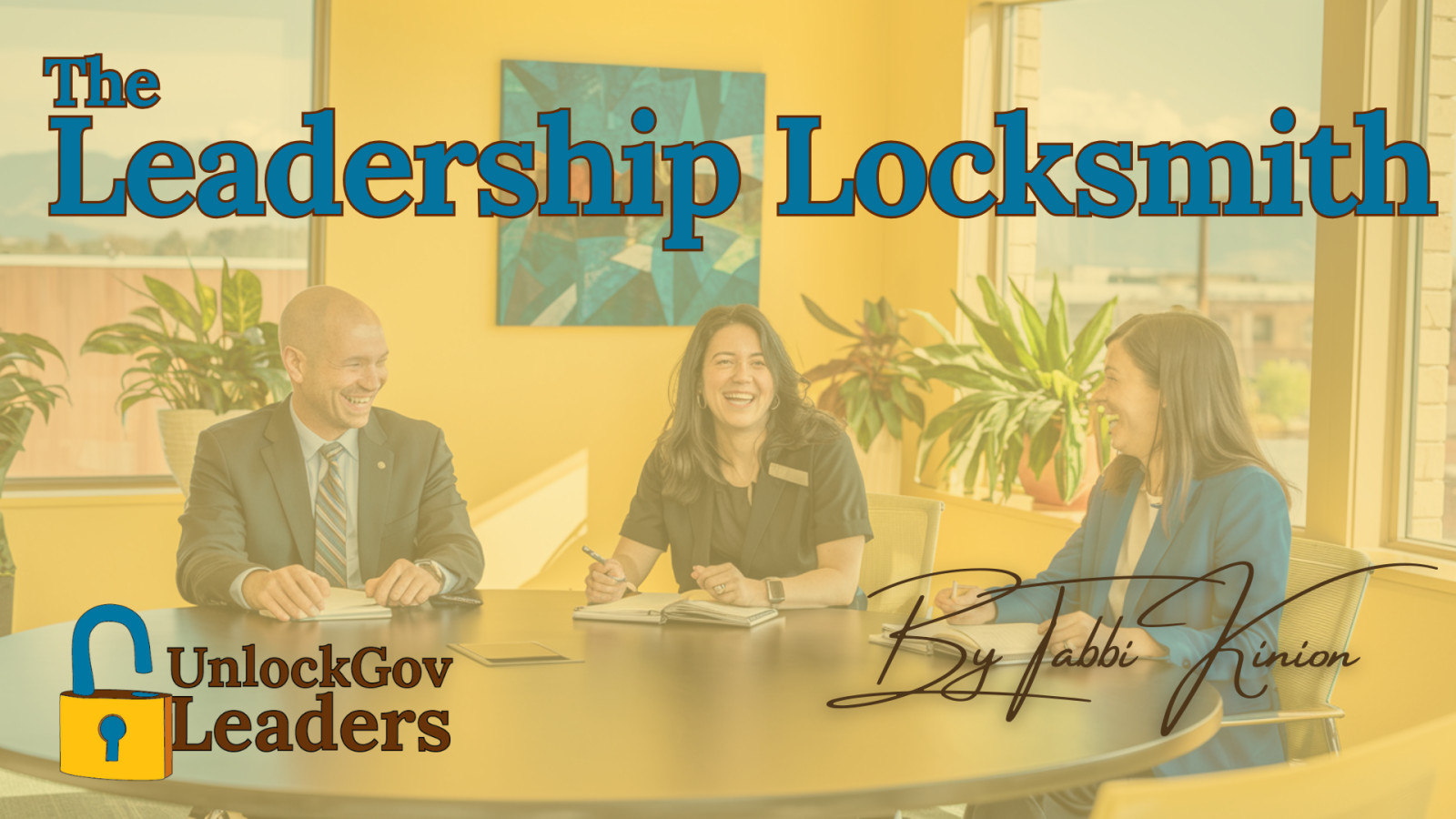
Once upon my late 20's, I was sitting at an Improv show in Denver and had that thought... I could do that! Little did I know that decision would transform not just my evenings but my entire approach to leadership.
From there, I spent a few years in classes and on stage at a couple of small theaters in the Denver area. (And oh! What I would give to have that 20-something energy again - working full-time, performing downtown, and then somehow still having the energy to socialize until all hours at least five nights a week!)
But here's the unexpected plot twist:
Those late nights of saying "yes, and..." taught me more about leadership than any management book ever could. Improv didn't just make me funnier - it made me a better leader in two crucial ways:
First, it taught me the art of truly listening and validating others' perspectives. In improv, if you're planning your next line instead of listening to your scene partner, the whole thing falls apart. Sound familiar, fellow leaders?
Second, and most surprisingly, it revealed the transformative power of appropriate humor in leadership. Sure, we've all heard "laughter is the best medicine," but in leadership? It's rocket fuel for team connection.
This week's Leadership Code Word is HUMOR.
It's time to challenge the notion that serious work requires serious faces all the time.
Here's why the best leaders embrace appropriate humor:
🎯 The Leadership Magic of Laughter
- Creates psychological safety (people trust leaders who make them laugh)
- Reduces workplace stress (hello, better productivity!)
- Makes messages memorable (bye-bye, boring meetings)
Think about your favorite leaders. I bet you remember the ones who made you laugh. The boss with the endless dad jokes about his “Saab story” because his car was always in the shop, the director whose eyes twinkled with subtle wit when he landed a joke no one noticed, the colleague whose laugh echoed down the hallway - we remember them because they made us feel connected.
But I can hear some of you now: "That's great, but I'm not funny."
Here's the secret - leadership humor isn't only about telling jokes or doing standup. It's about embracing our shared humanity and the delightful absurdity of work life.
Let me share a story that perfectly illustrates this...
Picture me, the brand new leader in the office trying to be a healthy professional, making one of those fancy bagged salads in the break room. One wrong turn later - SPLAT! The entire thing's upside down on the carpet. (That oil stain is probably still there!) Instead of hiding my klutziness, I shared it. Soon, everyone felt comfortable sharing their "human moments" - from walking into doors to those awkward, “I can’t believe I called the same person back twice” situations.
That's real leadership humor - not rehearsed jokes, but authentic moments that remind us we're all human.
Want to bring more light to your leadership? Try these approaches:
🌟 Humor Leadership in Action
- Share your own "oops" moments openly
- Find the lighter side of workplace challenges
- Create space for natural, appropriate laughter
- Lead with authenticity over perfection
In today's high-pressure public sector environment, your willingness to find humor in challenges sets the tone for your entire team. When you can laugh at the coffee maker's daily rebellion or that agency-wide email that went to reply-all instead of just the intended person, you give your team permission to stay positive, too.
The best part? This leadership superpower is already within you. You don't need to become a comedian - you simply need to be willing to let your human side show.
Ready to level up your leadership beyond just bringing more humor?
Through my 20+ years in public sector leadership, I've identified the 7 Leadership Mistakes that Destroy Confidence as a Public Sector Manager - and compiled proven solutions for each one.
Remember: Your team doesn't need you to be perfect. They need you to be real.

Ever witnessed a leadership face-palm moment that made you cringe so hard you needed a neck massage?
Picture this: An annual employee day turns into a leadership nightmare as a director publicly scolds their entire staff for... wait for it... talking to each other. 😬
Yep, I witnessed this firsthand, and it was about as effective as trying to stop a dam leak with sticky notes. Not only did it fail spectacularly to stop the gossip, it actually poured gasoline on the fire!
Here's the thing, fellow leaders: This isn't about "fixing" your staff or stopping people from talking. It's about recognizing that proactive transparency is simply part of your job description now.
When you create an environment where real information flows freely, something magical happens - your team starts operating from a place of security instead of fear.
🎯 Let's Get Real: Gossip isn't a sign that something's wrong with your team - it's a flashing red warning light that something's wrong with your communication strategy.
Think about it: When employees feel safe asking questions directly and know they'll get honest answers (even if that answer is "we don't know yet"), they're far less likely to rely on the rumor mill.
They'll come to you instead of speculating with colleagues.
They'll fact-check assumptions instead of spreading them.
Most importantly, they'll trust that if something big is happening, they'll hear it from leadership first.
🧠 THE SCIENCE BEHIND THE GOSSIP
Through my current Innate Wellbeing certification work, I've discovered some fascinating nuggets about how our brains handle uncertainty.
Spoiler alert: We're basically conspiracy theorists in waiting!
Here's what happens when information goes MIA:
📦 Our Brains Hate Empty Spaces: In the absence of real information, your team's imagination fills in the blanks. It's literally hardwired into our survival instincts!
😰 Anxiety Turns Up the Volume: When people feel insecure or scared, their imagination goes into overdrive - and rarely in a "sunshine and rainbows" direction.
🌀 Fear Creates a Feedback Loop: The more anxious people get, the more distorted their assumptions become. That wild theory about the office moving to Antarctica? Suddenly seems totally plausible!
⬇️ Trust Takes a Nosedive: When leaders respond by clamping down harder on information, it confirms everyone's worst fears. Hello, death spiral!
This week's Leadership Code Word is TRANSPARENCY.
It reminds us that silence from leadership creates a vacuum - and nature (plus your team's survival instincts) abhors a vacuum. If you're not filling that space with clear, consistent facts, anxiety and speculation will rush in faster than a last-minute budget amendment.
Look, I get it. Sometimes, we can't share everything.
Sometimes, we genuinely don't know what's coming next.
But here's what more than 20 years in public sector leadership taught me: your team would rather hear "Here's what we know right now" than radio silence.
They'd rather see you actively working through uncertainty than assume you're hiding under your desk (though trust me, I've been tempted!).
Most importantly, they'd rather get regular updates about what you CAN share than piece together their own story from break room whispers.
🔓 UNLOCKING YOUR GOSSIP-PROOF TRANSPARENCY PLAN
🌊 Flood the Zone with Facts
• Schedule brief daily stand-ups (even 5 minutes counts!)
• Create a "What We Know/What We Don't Know Yet" dashboard
• Send weekly email updates - yes, even if nothing's changed
• Use multiple communication channels (email, meetings, chat)
• Schedule brief daily stand-ups (even 5 minutes counts!)
• Create a "What We Know/What We Don't Know Yet" dashboard
• Send weekly email updates - yes, even if nothing's changed
• Use multiple communication channels (email, meetings, chat)
🎯 Make Information Accessible
• Create a central source of truth (team site, shared drive)
• Document decisions and their reasoning
• Share meeting notes within 24 hours
• Keep an updated FAQ
• Create a central source of truth (team site, shared drive)
• Document decisions and their reasoning
• Share meeting notes within 24 hours
• Keep an updated FAQ
🤝 Build Trust Through Transparency
• Admit when you don't have answers
• Share the timeline for expected decisions
• Explain what's preventing immediate answers
• Acknowledge rumors directly and correct misinformation
• Admit when you don't have answers
• Share the timeline for expected decisions
• Explain what's preventing immediate answers
• Acknowledge rumors directly and correct misinformation
✨ THE PAYOFF
When you consistently show up with transparent communication, your team shifts from "What aren't they telling us?" to "Let's ask - they'll give us straight answers."
When you consistently show up with transparent communication, your team shifts from "What aren't they telling us?" to "Let's ask - they'll give us straight answers."
That's not just better for morale - it's better for productivity, innovation, and your sanity as a leader.
Remember: "We're still figuring things out, but here's what we know..." is ALWAYS better than playing leadership hide-and-seek!
🚀 READY TO LEVEL UP YOUR LEADERSHIP?
If communication gaps are causing gossip chaos, you might be dealing with other confidence-crushing leadership challenges, too.
I've identified the 7 Leadership Mistakes that Destroy Confidence as a Public Sector Manager - and compiled proven solutions for each one.
Download your free guide to discover:
• The delegation disaster that's making you work 60-hour weeks
• Why your "helpful" problem-solving is actually hurting your team
• The meeting mistake driving your high performers away
• Plus four more confidence-killing traps you need to avoid!
• The delegation disaster that's making you work 60-hour weeks
• Why your "helpful" problem-solving is actually hurting your team
• The meeting mistake driving your high performers away
• Plus four more confidence-killing traps you need to avoid!
Here's to leading with clarity (and keeping the water cooler conversations boring)
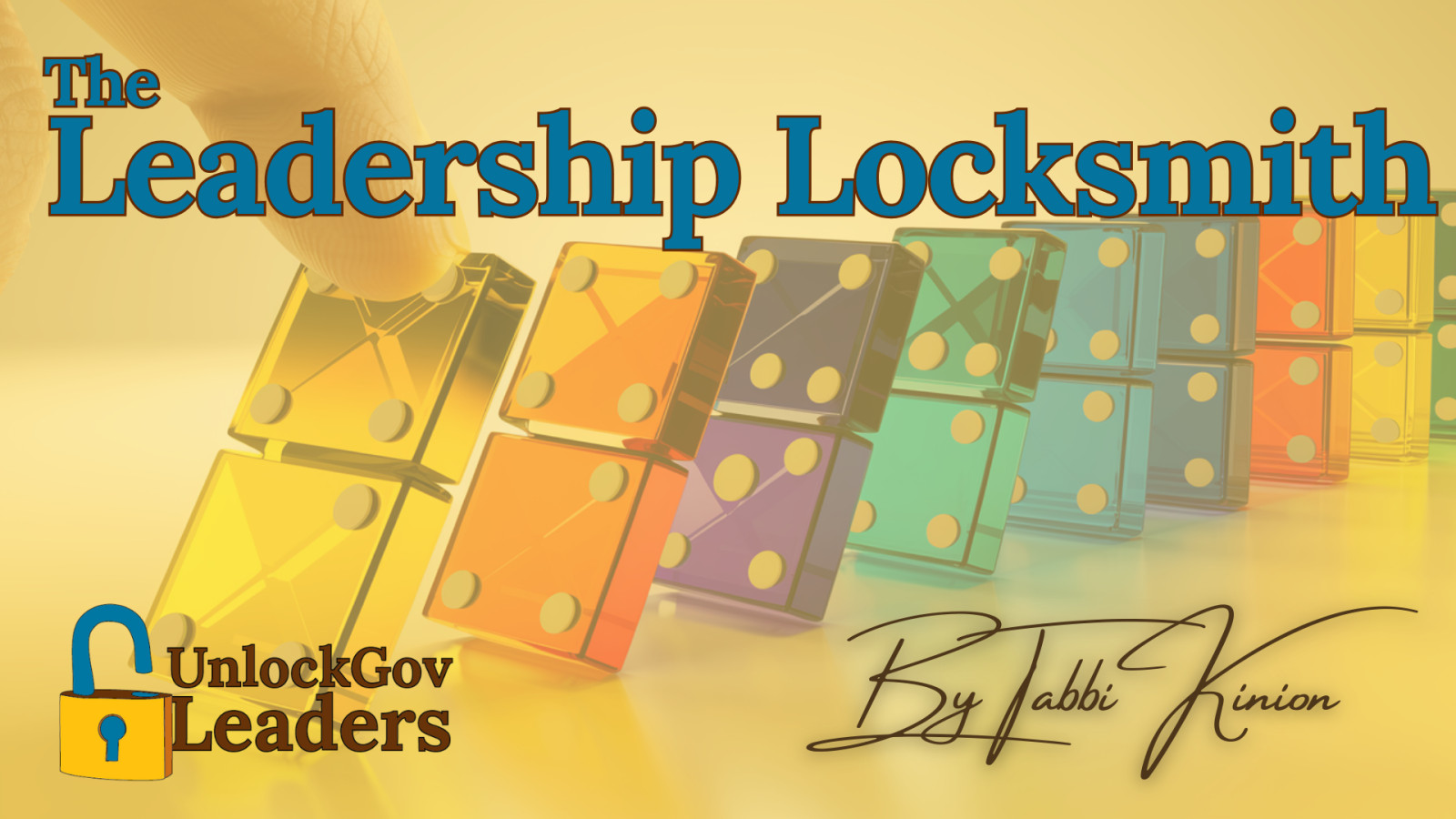
Let's be honest - you didn't join public service to spend your days drowning in emails and sitting in endless meetings.
You're here to make a real difference in your community.
To protect vital resources.
To lead meaningful change.
But somewhere between your mission and your Monday morning, chaos crept in.
Picture this: You're finally diving into that critical new management plan when...
ding "Quick question!"
buzz "Can you hop on a call?"
knock knock "Got a minute?"
ding "Please review ASAP!"
Sound familiar? I see you nodding! 😉
Like dominoes, each interruption knocks down your focus, productivity, and, ultimately, your ability to deliver on your mission.
But here's the flip side - when you set one firm boundary, it creates a positive cascade effect. Your ability to focus leads to better decisions, which builds team trust, ultimately creating more time for the work that matters most.
This week's leadership code word: BOUNDARIES
Here's the core of the matter - your work matters too much to let it get squeezed into the margins between endless interruptions.
Those breakthrough solutions you're meant to create? They need space to grow.
That team you're developing? They need your focused attention, not your scattered leftovers.
Let's unlock a few boundary-setting strategies to add to your 2025 leadership toolkit:
🔓 Email Batching
Email: Where good intentions go to die - unless you batch it like a boss!
1. Set Priority Hours - Block 2-3 specific times each day that you will focus on email and then leave your email notifications off for the rest of the day. No more ding-distractions all day!
2. Set Your Response Windows: Create clear expectations for response times and tell team members what to expect. (For example, let them know if the email is Critical: You'll respond the same day, Important: Within 24 hours, Regular: Within 48 hours, FYI only: Weekly batch processing)
3. Use an Auto-reply Template: Turn your inbox into your ally! Set up an auto-reply that works harder than a beaver building a dam. You'll set clear expectations while keeping your sanity - and yes, you can still surprise folks with an early response if your day allows! For Example: Thanks for your email! I check messages at set times daily to ensure focused work and better responses to you. For urgent matters, please call/text [number]. Otherwise, expect a thoughtful reply within [timeframe]. For [specific issues], please contact [alternate contact].
🔓 The Meeting Matrix
Does your work suffer because you attend too many meetings?
If so, it’s probably time to create a tool to help determine WHICH meetings are must-attend.
Before you click "Accept" to that meeting invite, ask yourself questions like:
- Does the topic of this meeting directly impact your top 3 priorities?
- Are YOU the essential expert needed?
- Is there someone better suited to attend than you?
- Do you have the option to say no?
- Could this be an email? (Please say yes!)
- Could the topic be added to another set meeting agenda?
🔓 Tech-Free Times
Want to know what separates good leaders from great ones? It's not their email response time - it's their ability to think deeply and create space for innovation.
When your phone isn't buzzing every 3 minutes, your brain actually has room to do its best work.
Design Your Own Tech-Free Sanctuary by considering setting aside time for you to be creative, proactive, and/or focused:
□ Morning routine (first 30-60 min)
□ Deep work blocks (90 min minimum)
□ Transition times (between meetings/tasks)
🔓 NOT-NOW Scripts
Your secret weapon for saying "no" gracefully is being prepared!
Keep ready-to-roll responses in your back pocket - they're like diplomatic immunity for your time. Professional, respectful, and clearer than a mountain stream!
Here are some starter scripts:
- Meeting deflect: "Thanks for thinking of me! Could you share the agenda first? I may have the perfect person to send in my place."
- Email pause: "Got your request - I'm in the field until Thursday and will respond thoughtfully after I return."
- Urgent-but-not-really: "Help me understand the timeline - what happens if we tackle this next week?"
Your mission-driven work deserves your best energy, not just your leftover minutes.
These boundaries aren't walls - they're filters that let the important stuff through while keeping the chaos at bay.
2025 is your year to realign your time with your purpose. Because when you protect your time, you protect your ability to create a lasting impact.
And isn't that why you chose public service in the first place?
🎁 FREE DOWNLOAD: Ready to continue leveling up your leadership confidence? Get my new guide, The 7 Most Common Leadership Mistakes that Destroy Confidence as a Public Sector Manager (and How You Can Easily Avoid Them).
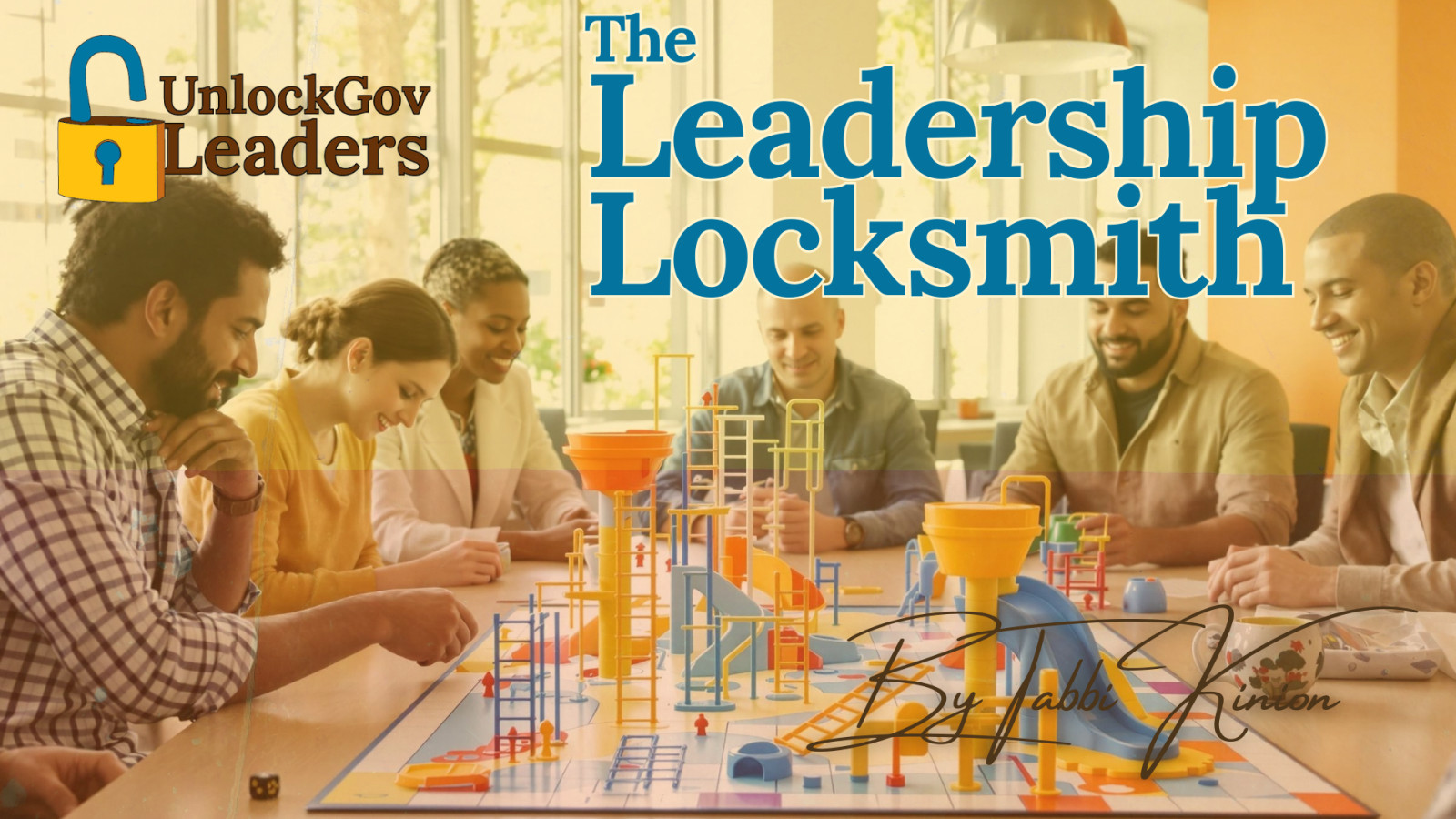
Do you remember Chutes and Ladders?
The other day, I was reminiscing about playing with my niece and nephew (who are now somehow teenagers - time flies!). That simple board game teaches us something profound about life: just when you think you've made it, one roll can send you sliding back to square one.
Or - surprise! - you might leap forward when you least expect it.
This brings us to this week's unlock code: GOAL SETTING
In my 20+ years of government leadership, I've played the goal-setting game two different ways. I call them the Architect and the Mountain Climber methods. (Stick with me here - I promise this will resonate!)
The Architect in me LOVES detailed blueprints. I'm talking color-coded spreadsheets with multiple tabs, daily task breakdowns, and milestone dates that would make any project manager swoon. (Come on, I know some of you are nodding along right now!)
Then there's my inner Mountain Climber who simply focuses on the next handhold. See the peak, spot a few key waypoints, check your gear, and start climbing - adjusting the route as new paths reveal themselves.
Here's the thing: I ping-ponged between these approaches for years, and both got results. But hindsight (don't you love that crystal-clear rearview mirror?) shows something fascinating.
Going Full Architect
When I went full Architect, I spent more hours perfecting my color-coded masterpieces than actually climbing. The spreadsheets were gorgeous, sure, but they became more like art projects than action plans. I was so busy updating timelines and adjusting Gantt charts that I barely moved forward.
Climbing Mountains
The Mountain Climber approach - simply focusing on that next achievable step - not only got me to the summit faster but also brought unexpected bonuses.
Without my rigid plans blocking the view, team members felt comfortable suggesting creative shortcuts and scenic routes I'd never considered. Their fresh perspectives often led to better solutions than my perfectly planned path ever could.
Plus, when we hit inevitable obstacles, we didn't waste time mourning our derailed plans. We just found another handhold and kept climbing. Less stress, more progress, and - plot twist - even better results.
Now, let me be clear - especially in the public sector, where we're playing with taxpayer money and ambitious community goals, you need your essential waypoints. Every successful climber needs proper gear and solid preparation.
But looking back, I wish I'd spent less time polishing those beautiful project plans and more time simply asking: What's the next step that moves us closer to our goal?
Are you ready to play?
Here's your 2025 goal-setting game strategy:
- Set clear, meaningful goals (personal or professional) - and write them down!
- Remember: Your worth as a person isn't tied to achieving goals
- Release the emotional attachment to the "how" - the how will show up (it always does)
- Don't overplan - this is a game where you have set the finish line and already know the rules
- Notice when the first step reveals itself
- Play the game - celebrate the ladders, learn from the chutes
Each goal is a new level to unlock, each challenge a puzzle to solve. Just like in any good game, you don't need the whole strategy guide before you hit "start" - you just need a direction and readiness for your next move.
Some days, you'll hit a ladder and soar. Other days, you'll slide down a chute. That's not failing - that's just playing the game! And between you and me? Those slides often teach us more than the climbs. 😉
What’s on my game board for 2025?
I'm unlocking new levels in helping government managers break free from leadership lockdown. Think of me as your friendly neighborhood Leadership Locksmith, creating keys to unlock the doors holding you back from your full potential.
The first lock I'm going to pick? I'm unveiling The 7 Most Common Leadership Mistakes that Destroy Confidence as a Public Sector Manager (And How You Can Easily Avoid Them). Consider it your master key to unlocking your leadership confidence.
What leadership level are you ready to unlock first? (No boss battles required! 🎮)
Keep rolling those dice, fellow players. Like any great game, leadership is meant to be played, not perfectly planned!

Picture this: It's 10 PM, and you're perched on your bed with your work laptop, crafting "just one more email." Sound familiar?
I've been there – doing the sleep-vs-early-morning mental hour calculation gymnastics, believing that "just a few hours on Saturday" would finally help me catch up.
Spoiler alert: It never did.
Here's the truth about burning the midnight oil: Back in 2014, Stanford economist John Pencavel's study, The Productivity of Working Hours*, proved what we secretly suspected – our productivity plummets after we work 50 hours per week. Those extra late-night email sessions? They're making you less effective! The sweet spot? 40-50 hours max for peak performance.
If we've known this for a decade, why keep pushing ourselves?
It's our brains. We do this to ourselves because we haven't worked on changing the belief system that tells us we are the exception to the rule - that we are the human being who gets more productive when working too many hours. But if you add up the weekend, late night, or early morning hours and regularly cross the 200-hours-per-month threshold (the number that, if it showed up too many months in a row, would make my boss sit me down in her office and ask questions), you are likely falling prey to some of these common logical fallacies that used to plague me.
Let's bust some of these common sneaky leadership mindset traps.
Do any of these sound familiar?
- "If I don't handle everything, the whole project fails" (All-or-nothing thinking that ignores your team's capabilities)
- "Last week's budget mess means I'm always behind" (Overgeneralization of one isolated incident being applied to everything you do)
- "Every team challenge is my responsibility" (Personalization and ownership that undermines your delegation and your team)
- "Long hours are just part of public service" (An appeal to a tradition that perpetuates burnout)
- "I feel overwhelmed, so I must not be working hard enough" (Emotional reasoning at its finest...)
🔑 This week's Leadership Locksmith code word: BALANCE
Once you realize that you are a human being who falls into these common traps, the real magic happens when you prioritize and embrace balance.
When you work fewer than 50 hours per week, you get:
- Sharper decision-making (because sleep beats spreadsheets)
- Higher team performance (they mirror your healthy boundaries)
- Enhanced creativity (stressed brains don't innovate)
- Better stakeholder relationships (no more cranky emails!)
- Improved work quality (focused hours beat zombie hours)
- Sustainable long-term success (marathons > sprints)
The secret to breaking free? It's not about working more – it's about working smarter. Private sector leaders figured this out ages ago (with help from their leadership coaches), and now it's the public sector's turn!
Because as John C. Maxwell says, "The best leaders are not the ones who walk alone. They are the ones who walk with others."
*Pencavel, J. (2014). The productivity of working hours. The Economic Journal, 124(575), 200-223. https://doi.org/10.1111/ecoj.12037
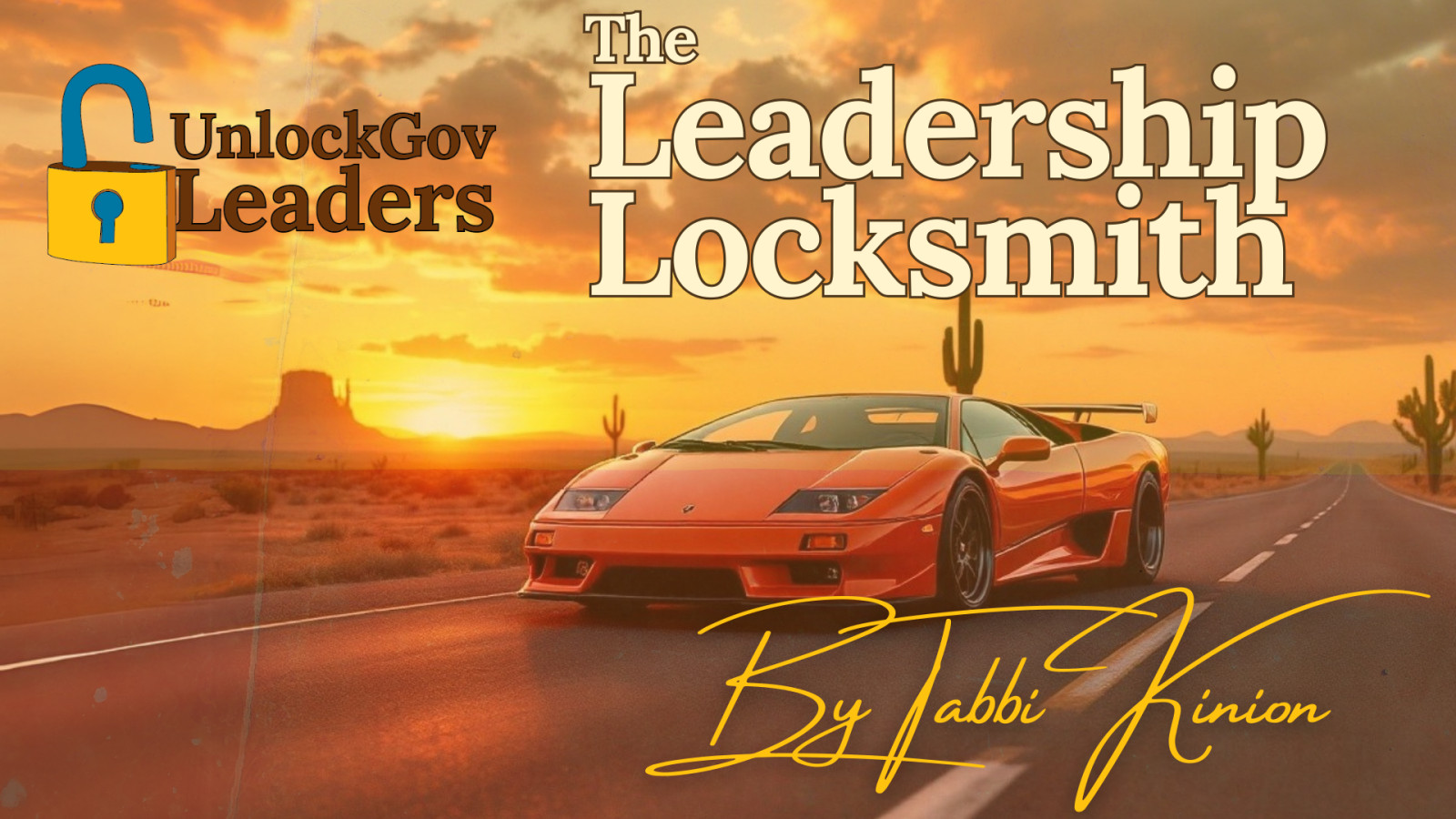
Look, my automotive expertise extends to scheduling dealership appointments and having excellent taste in car colors (red, obviously). Custom car restoration? That's about as familiar to me as quantum physics.
Which is why it's surprising that I just binged an entire Netflix series about rebuilding classic cars.
Have you watched Tex Mex Motors on Netflix yet?
In these dark, cold months, I often dive into reality TV (my favorites are the ones about cults - what can I say, I'm fascinated by group dynamics and strong leaders!). But this car restoration show caught me by surprise - not because of the stunning vehicles, but because it hit so close to home as a leader.
What hooked me was watching the real, raw process of strangers becoming a dream team. No screaming and yelling, no reality TV backstabbing - just talented people learning to trust each other and merge their unique superpowers. As someone who's led teams through ambitious projects, I found myself nodding along, remembering those magical moments when individual rockstars start playing in harmony.
Their mission was clear: Hit $500,000 in profit in 4 months. Now that's what I call a SMART goal! It was Specific (restore custom cars), Measurable (that big profit target), Achievable (stretched but possible), Relevant (success meant keeping their dream alive), and Time-bound (4-month deadline). But what really got me thinking was how they tackled it together.
You know what they say - "None of us is as smart as all of us." Watching this crew prove that truth hit home hard. Here were people bringing totally different skills to the table - mechanical genius, business savvy, design brilliance, sales magic - and learning to weave it all together into something extraordinary. As a leadership coach, I see teams struggle with this dance every day. When it clicks, though? Pure magic.
This brings us to this week's code word: Teamwork.
Not just any teamwork - we're talking about that magical combination that transforms a random group of individuals into an unstoppable force.
Like the Tex Mex crew, great teams need four essential elements:
🤝 Trust: The high-octane fuel that powers everything. When team members trust each other and have psychological safety, they share ideas freely, admit mistakes openly, and take smart risks together.
🎯 Clear Roles: Everyone needs to know their lane. Just like you wouldn't want three people trying to change the same tire, teams thrive when each person understands their unique contribution.
🌟 Shared Goals: Success isn't just hitting numbers - it's about everyone understanding and buying into the bigger picture. What's your team's equivalent of a completely restored 1995 Cadillac Fleetwood lowrider?
🔄 Coordinated Effort: The smoothest engines have all parts working in perfect sync. How well does your team's workflow purr?
Think about your team right now. Are they humming along like a completely restored 1997 orange Lamborghini Diablo or sputtering like a dusty old engine in need of a tune-up?
Let's pop the hood and run a quick diagnostic:
🔧 Trust Test: Do ideas flow freely, or is everyone steering clear of the tough conversations? Watch for signs like hesitation to speak up in meetings or the dreaded "parking lot conversations" after decisions are made.
🔧 Role Clarity Check: Is everyone confidently driving in their lane, or are they swerving across the center line? Clear roles mean less friction and faster progress.
🔧 Goal Alignment Gauge: If you asked each team member to describe what success looks like, would their answers match? Misaligned or misunderstood goals are like trying to drive with a flat tire.
Your Leadership Challenge:
Choose one area where your team's performance needs attention. What small adjustment - think fine-tuning, not engine replacement - could help shift them into high gear? It could be as easy as a quick update meeting to clarify roles and expectations or as difficult as sitting down with that employee who is clearly broken down on the shoulder.
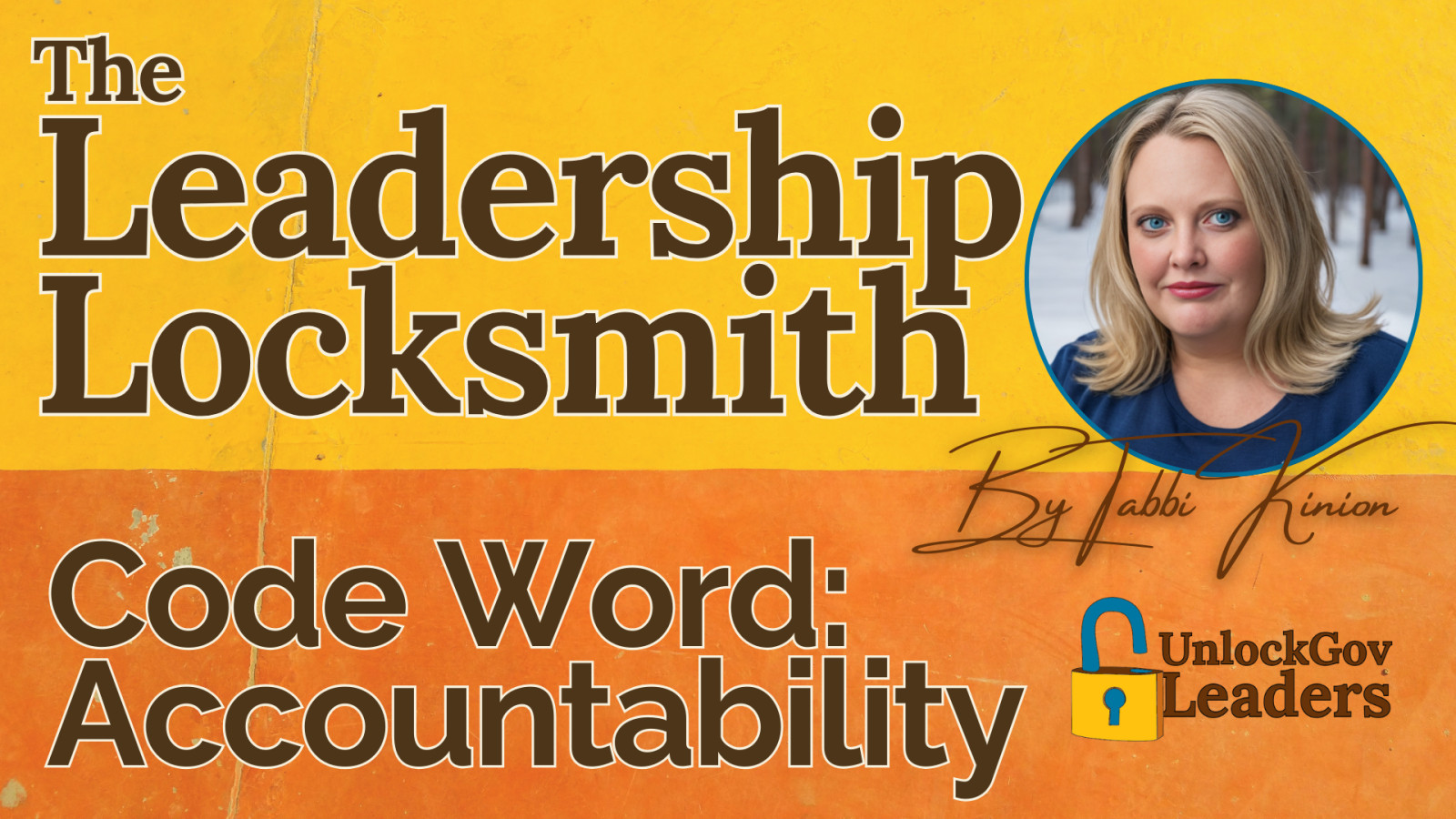
There's this magical leadership ingredient that transforms good teams into great ones. Your top performers are craving it, but most bosses get it completely wrong.
It makes all the difference...
Have you ever worked for someone who seemed completely clueless about your work - or worse, didn't seem to care whether you showed up?
Let me tell you about my tale of two bosses. As a senior manager, I had one supervisor who technically "trusted me to do my job." But I would have bet $100 he couldn't name a single project I was working on.
His predecessor? Pure gold. We collaborated, schemed, laughed, and made big moves that transformed our team. Under his leadership, I stretched toward ambitious goals, fell head-over-heels in love with my job, and practically bounced into the office each morning.
Then came the new guy. For two years straight, our only performance discussions happened during annual reviews. Despite quarterly check-ins being mandatory, he'd wave them off with a casual "We don't need to meet—you know I think you're doing an outstanding job." He assumed his hands-off approach showed trust.
What I actually heard? "Your work isn't worth 30 minutes of my time."
That's when my spark started to fade. If my boss didn't care, why should I? I went through the motions, mourning the passion I once had for that role.
Now, you might be thinking, "But he trusted you and gave you space! What's the problem?"
And that brings us to our leadership code word of the week:
ACCOUNTABILITY
Let's reframe accountability—it's not the professional world's version of "gotcha" or micromanagement in disguise. True accountability is about creating an environment where people take ownership of their work because they know it matters. It's regular, honest conversations about progress, challenges, and wins. It's clarity about who's doing what by when and why it matters to the bigger picture.
Think of accountability as the GPS for your team's success - it helps everyone know where they're going, if they're on track, and how to course-correct when needed. And here's the plot twist: accountability isn't just about your team being accountable to you - you're equally accountable to them.
Proper accountability transforms average teams into high-performing powerhouses. It's the difference between rowing in circles and winning the race.
Here's something that might surprise you: Your top performers actually crave accountability. They want those conversations about their accomplishments and challenges. They want to know their work matters enough for you to pay attention and care about the outcome.
Why?
Because when you hold your team members accountable, everyone gets:
- Clarity - team members know exactly where they stand
- Fairness - the same rules apply across the board
- Trust - people know you'll follow through, so they do too
- Growth - your regular feedback fuels improvement
- Pride - you recognize and celebrate their wins
Without accountability, it's like playing basketball without keeping score—sure, people might have fun, but they won't know if they're winning! And without a score, they'll eventually get bored and move on to something more meaningful.
Ready to move from accountability angst to leadership confidence?
🚀 Take our quick assessment to see if UnlockGov Leaders is your next power move! This isn't your typical government training - it's a 28-week transformation for public sector managers who refuse to accept that burnout is "just part of the job."
In just 3 minutes, you'll discover if you're ready to:
• Lead with genuine confidence (not just look good on paper)
• Build a high-trust team (even within bureaucratic constraints)
• Actually leave work at work (yes, really!)
• Join an elite community of government leaders making waves
Until next time, I appreciate you. I believe in you. You've got this.
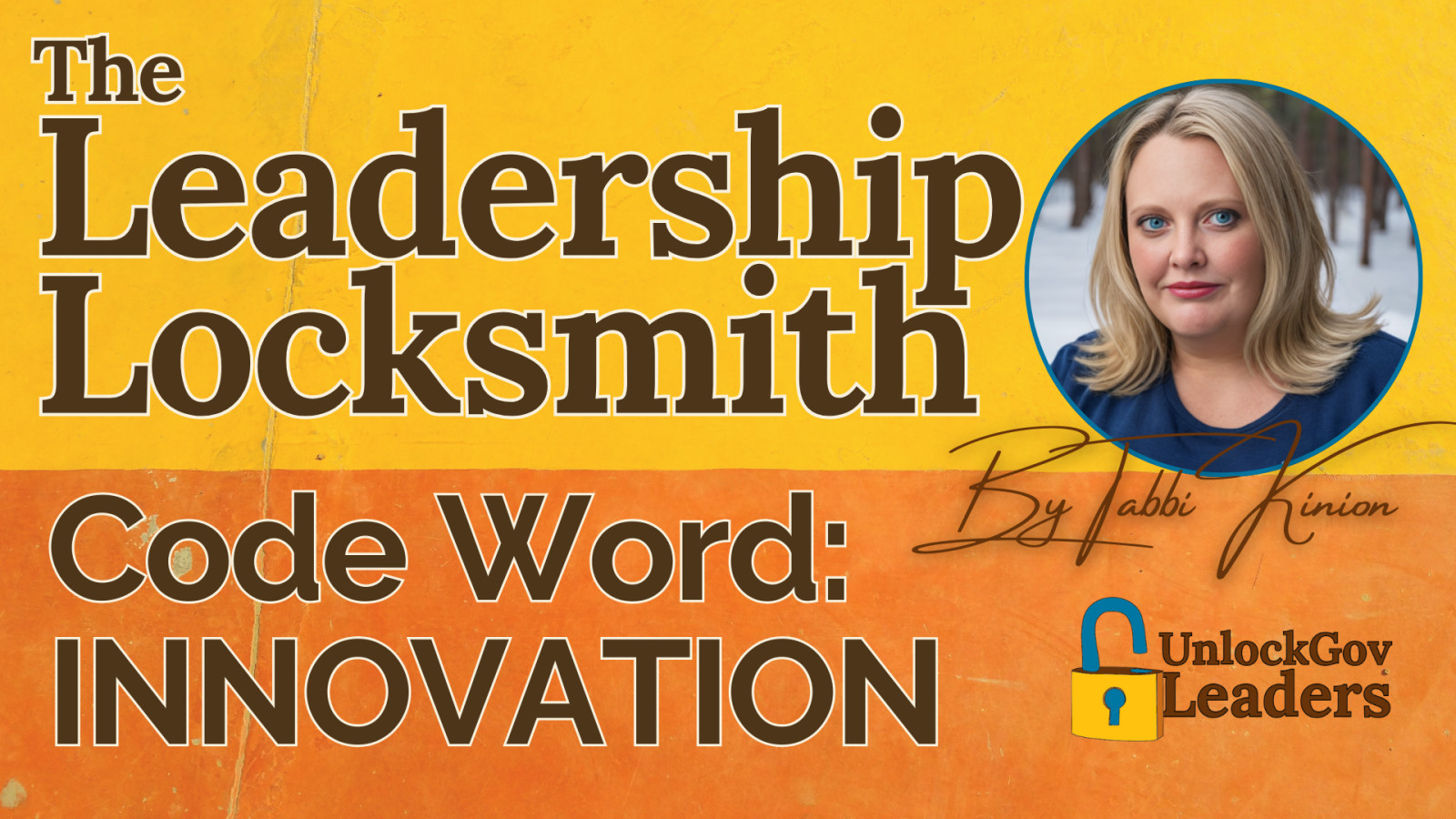
Today, we're diving into what makes your team burst with creative energy!
Years ago, on a crisp fall evening, I was sitting around a fire pit with a soon-to-be retiring colleague from the US Forest Service. I didn't work at the Forest Service - I worked at another agency, but that doesn't matter here.
Steve was sharing some of his hard-won wisdom with me as he was closing out his decades-long career. He gave me a leadership analogy I have carried into my work ever since that lovely autumn evening.
What did he tell me?
It is so simple and was such an A-Ha moment.
He told me that the real job of a leader is to roll rocks out of the trail so your team can get things done.
So simple and so true.
Great leaders ensure that people have the support, resources, and runway (err—open trail) they need to do their jobs.
And doing this for your team leads me to our leadership code word for this week:
INNOVATION
Here's the truth: The best innovative leaders aren't necessarily the ones with all the bright ideas - they're the ones who create an environment where great ideas can flourish. They're masters at making it safe for their teams to think differently, dream bigger, and, yes, occasionally fail spectacularly.
When you lead as an innovation catalyst, you're not just giving permission to think differently - you're actively inviting disruption to the "we've always done it this way" symphony.
You're the conductor who turns the mundane melody of bureaucracy into a jazz improvisation of possibilities.
Fun fact: Studies show that teams who feel psychologically safe to suggest new ideas are 76% more likely to generate innovative solutions. That's right - your leadership style literally unlocks your team's creative potential!
Put Innovation in Front:
Try this "Yes, And" challenge this week: When team members bring ideas, respond with "Yes, and..." instead of "Yes, but..."
Watch how this tiny shift transforms your team's willingness to share creative solutions.In a world of permission-seekers, be the permission-granter.
Your team's next breakthrough idea is waiting for you to create space for it. Your leadership is the key that unlocks your team's innovative potential, and that ripple effect is changing your corner of the public sector.
